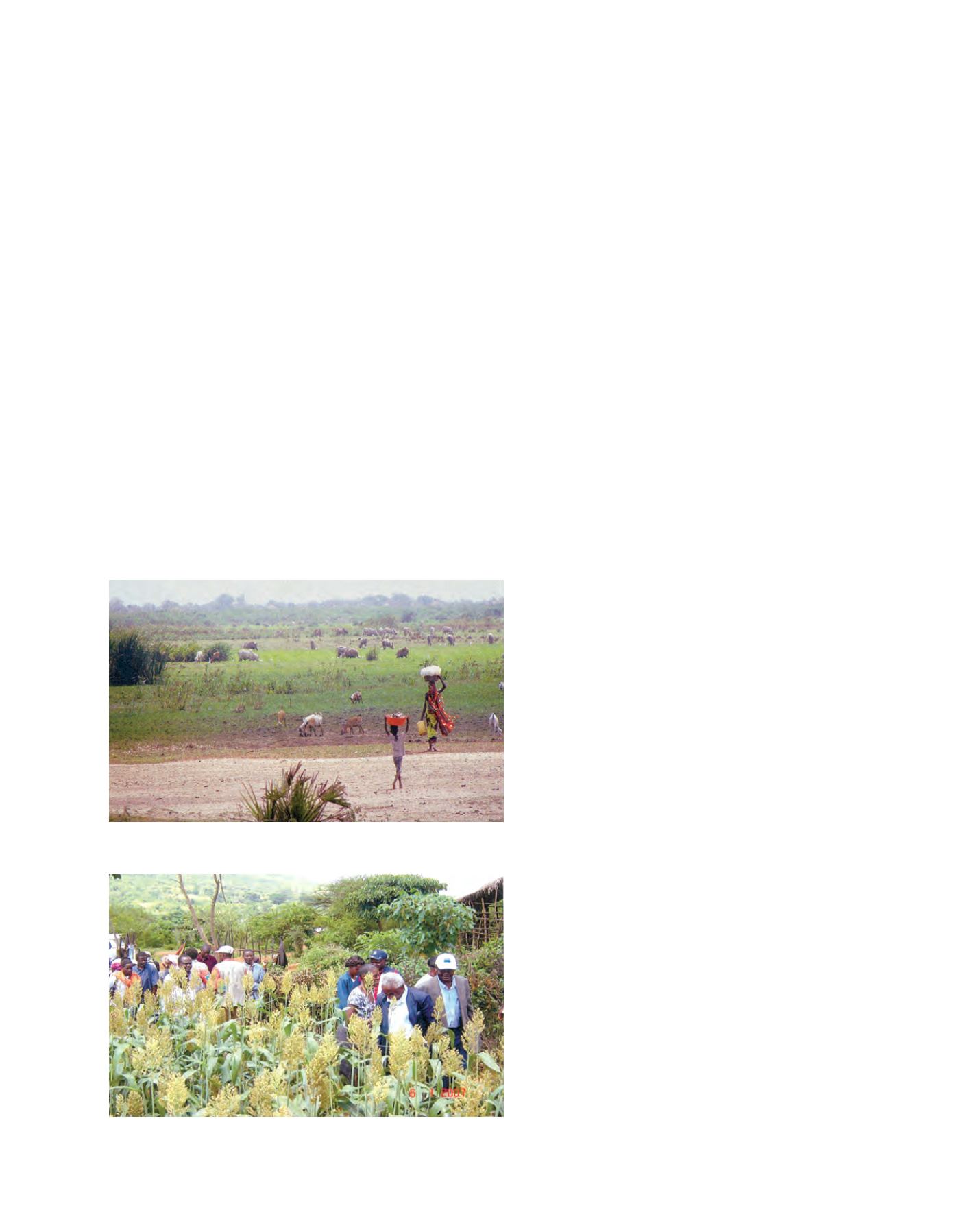

[
] 237
A
daptation
and
M
itigation
S
trategies
from the International Development Association of the World Bank,
the Government of Kenya and community contributions. The project is
designed to empower local communities to reduce the vulnerability of the
poor to adverse outcomes associated with recurrent flooding.
Floodwaters have wreaked immense havoc among the communities
situated on the Kenyan flood plains. WKCDD/FM aims to provide these
communities with flood forecasting early warning information, as well
as guidance on the proper management of floodwaters. This will involve
the construction of protection structures such as dykes, as well as the
rehabilitation and management of catchment areas.
The WKCDD/FM project follows methodology that has proven
successful in other contexts. One such example is the project’s use
of the Participatory Integrated Community Development approach.
Flood risk modelling is conducted daily with input including rainfall
measured within the basin and a short-range prediction. Flood risk
indicators and forecasts of water levels for the Nzoia River Basin are
generated and disseminated to aid in decision-making processes.
Success stories – such as the evacuation of vulnerable commu-
nities prior to a flood – are already emerging. Using the reliable
information provided from the model outputs, the provincial
administration is now able to evacuate people living on flood plains
far more quickly than before the project.
Another example of a collaborative adaptation efforts is the commu-
nity drought resilience project that was initiated in 2006 in Sakai,
Kisau Division, in the Makueni District. It is one of the three pilot
projects being implemented as part of the regional project
‘Integrating Vulnerability and Adaptation of Climate
Change into Sustainable Development Policy Planning
and Implementation in Eastern and Southern Africa’. The
project is funded by the Global Environment Facility and
the governments of the Netherlands and Norway, and is
supported by kind contributions from the governments
of Germany, Kenya and Rwanda. It is being implemented
by the Centre for Science and Technology Innovations in
partnership with the Government of Kenya Arid Lands
Resource Management Project.
Aims of the project include:
• Downscaling climate forecasts to guide the choice of crops
planted and the timing of agriculture activities
• Improving agronomic practices by providing access to fast
maturing and drought resistant crop varieties
• Building sand dams, shallow boreholes and drip irriga-
tion systems to improve access to water for use in crop
production.
A number of success stories have been recorded since
the inception of the project. It has been established
that farmers using the downscaled seasonal weather
forecasts and undertaking early land preparation and
dry planting are getting better harvests than those who
have sustained the ‘business as usual’ approach. In addi-
tion, early maturing varieties of maize and pigeon peas
selected on the basis of the forecasts are performing
better that the varieties usually used by the farmers.
A final example of a collaborative project is The Kenya
Wetland Forum. The forum is a multi-stakeholder insti-
tution concerned with the conservation and management
of wetlands within the ‘wise use principles’ of the Ramsar
Convention.
4
The programme adopts a holistic approach
to address the impacts of climate change on the coastal
and marine resources of Kenya. The main goal of the
programme is to increase understanding of climate
change issues, as well as to prompt the development of
adaptation and mitigation strategies.
The objectives of the programme are to:
• Promote an ecosystem-based approach for the conser-
vation and management of critical coastal and marine
ecosystems
• Build and strengthen the capacity of local communities
and relevant stakeholders to manage local coastal and
marine resources
• Promote sustainable livelihood options for vulnerable
coastal communities.
There are five main local-level projects:
• Kuruwitu community marine conservation project
• Wasini Island mangrove forest conservation, clean and
safe water initiative
• Conservation and sustainable management of coastal and
marine resources on the south coast
• Coastal wetlands management and conservation in Jimbo
village, Vanga
• Building capacity to adapt to climate change impacts on
conservation in East Africa.
Limited watering points during a dry season can result in conflicts
Image: Kenya Wetlands Forum
A farmers’ field day
Image: Wandiga, 2008
















